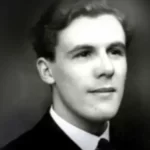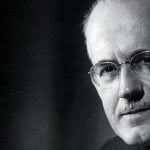A review of Movements That Changed the World. By Steve Addison.
Missional Press, 2009. (Available in Australia from www.movements.net and Koorong Books)
There are lots of books which discuss church history. There are also plenty of books which discuss missions, spiritual biographies, the Christian life, and the task of the church. This book features all these topics in a brief (140 pages) but comprehensive format.
It does so to drive home the message that the work of the church is to make disciples and to transform our world. And that is done primarily by means of living, vibrant and dedicated movements. The expansion of the church is not achieved by dull institutions and sterile routines, but by dynamic moves of God.


This book records many of the inspiring past and present moves of God, and reminds us of what Jesus came to do, and what he expects us to do. As church planter Addison says, Jesus did not come to establish a religion or set up an institution, but to motivate and inspire men to continue in the task of reaching everyone with the good news.
He offers a number of examples from missionary endeavours and church history of how dedicated followers of Jesus who were intent on moving with God, instead of building kingdoms for themselves, radically impacted their world.
Those who are familiar with the story of the church’s expansion and of church history will find many familiar stories here. But it is good to be reminded afresh of how God works, and what he expects of his people. What we find here are five common features of vibrant moves of God.
These are: a white hot faith; commitment to a cause; contagious relationships; rapid mobilisation; and adaptive methods. These characteristics are seldom missing when one studies the great movements of Christian activity both past and present.
Addison reminds us that these qualities are what drive the church forward. It is not money, great plans and strategies, large numbers, or academic qualifications that will ensure that the job is done. It is these five characteristics which time and again have been so prominently displayed in the great works of God.
Along the way Addison features numerous individuals and groups which exemplified these traits. These include the Moravians under Zinzendorf, St Patrick, Floyd McClung and the Dilaram House movement, Wesley and the Methodists, a former professional wrestler who now plants churches in Sydney, William Carey, Tim Keller’s ministry in contemporary New York, persecuted but thriving believers in Communist China, and many others.
The book closes with a reminder of what things were like when Jesus was last with his disciples. In the upper room with the 120 Jesus told them of their one task: to make disciples of all nations. The command to go was all they had at their disposal.
He did not leave them with a large bank account, instruction manuals, flow charts, church growth conferences or three-year plans. He left them with his own example, and he left them with the Holy Spirit. And with those gifts from the risen Christ they went on to turn their world upside down.
And we are still feeling the impact of that powerful move of God some 2000 years later. We all need to be refreshed and revitalised as to what our real calling is all about. This book reminds us that God is always willing to move and move mightily if we are willing to let him call the shots and be our guide.
All this is not to denigrate theological training, fund-raising, strategy sessions and brainstorming. But it is to remind us that the real work of the gospel can never be reduced to mere man-made techniques, marketing and expertise. When and where these five characteristics are found, the exciting and innovative moves of God will be sure to spring forth.
Addison is to be congratulated for rewarming our hearts and revitalising our minds and spirits about what needs to be done, and how it should be done. We all need to be inspired and re-inspired as to why we are here, and what our Christian calling entails. This short volume helps to do just that.
[677 words]




















yes, yes, yes!!! Religion has killed the church and relationship with a risen Christ will bring it alive again.
Roger Marks
Thanks again Bill – for sharing this overview of what our faith is really about. It is not of this world or its organisational techniques!
Stephen White
Bill, your article unveiled a major deficiency in our faith.
We do not recognise the Josephs, Joshua, Davids, Ruths or Abigails of our culture. Biographies are urgently needed. China had some. John Sung sacrificed a University career to preach the Word. Today 100 milion love our Lord. Benjamin Chew guided Singapore during the invasion of WW11. Pak Octavianus led the revival in Indonesia, with now 30 million believers. Kenya nurtured Festo Kivengere, a polished saint. The UK produced CT Studd, test captain, Hudson Taylor, Martin Lloyd Jones, while U S gave AW Tozer, Bill Bright, Moody, Billy Graham, David Winter. Germany’s Bonhoefer, Romanian Wurmbrandt.
Bill, please challenge us to study these saintly characters.
Harrold Steward